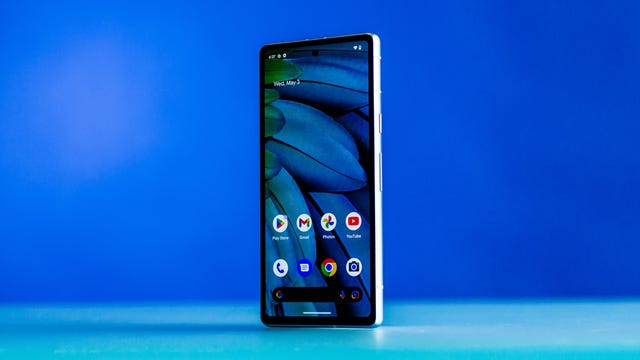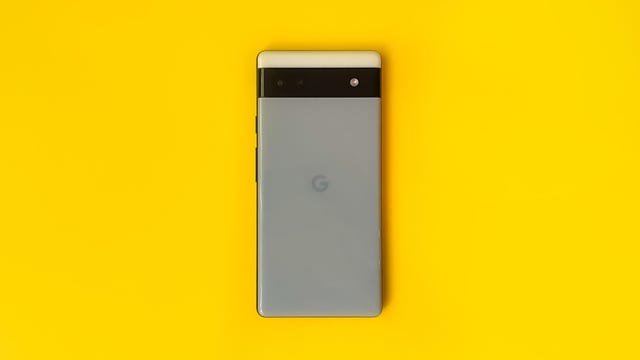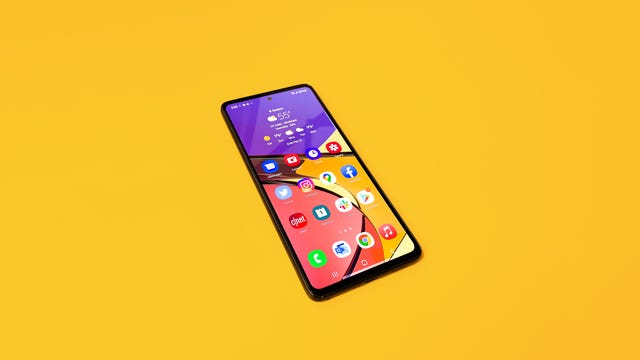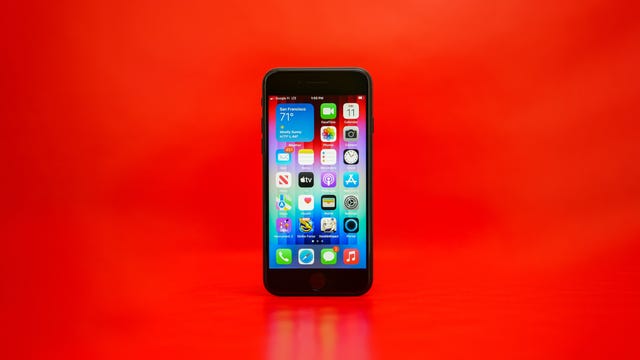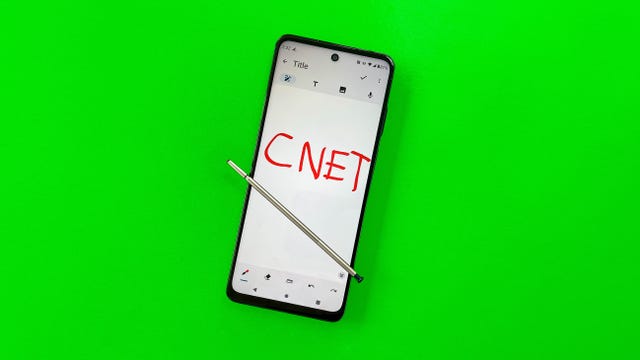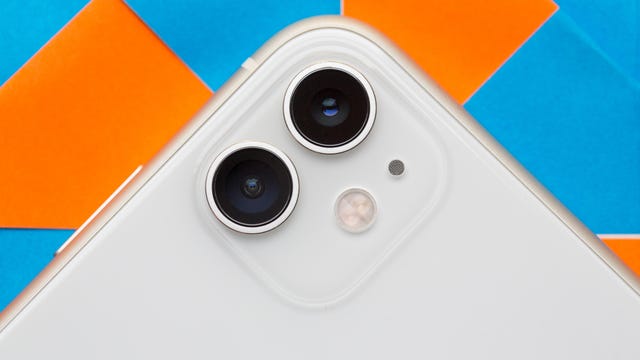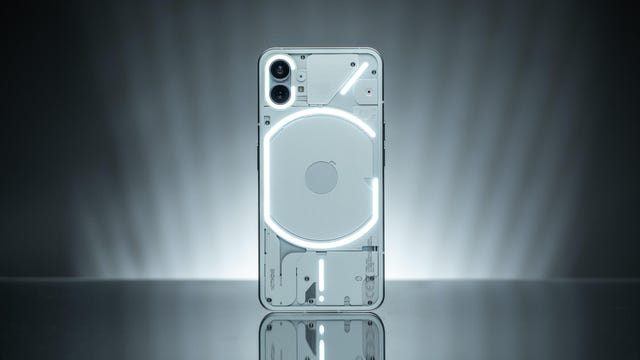Technologies
Best Phone Under $500 for 2023: New Features at Lower Prices
Our latest best phone under $500 is so close to its more expensive sibling, there’s no reason to pay more for it.
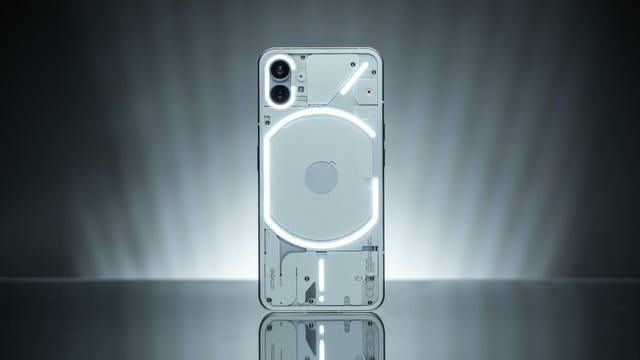
In this article:
The best phones under $500 include so many features that you want to see in an excellent phone, with sacrifices that you might not even notice. These are phones that include displays with high refresh rates, modern chips, good cameras and 5G. They even get several years of software and security updates.
These phones do make cuts that justify why they’re cheaper than phones that cost more than $500, but those cuts are increasingly in areas that might not raise any particular flag when you just want a reliable device. Apple’s iPhone SE along with Google’s Pixel 6A and 7A phones, for instance, have a smaller screen, but all run on newer processors and software. Samsung’s Galaxy A series of phones often look just like the Galaxy S line, but instead run on a less powerful processor. And the Moto G Stylus 5G takes nice photos, provides a roomy 256GB of space and throws in a stylus, but Motorola doesn’t provide software support for as long as its competitors.
Photography and video in particular are areas where the phones in this price bracket take a noticeable hit in comparison to their more expensive counterparts. However, photo-processing software should help pick up some of the slack. For instance, while the iPhone SE has a single 12-megapixel camera that doesn’t support night photography, its A15 Bionic chip does allow for Apple’s Deep Fusion processing. It’s a similar situation for the Pixel 6A, which uses a 12-megapixel main camera and a 12-megapixel ultrawide camera, yet can enhance those photos with processing powered by the phone’s Tensor chip. However the new Pixel 7A offers a 64-megapixel main camera, which some might consider an upgrade from the Pixel 7’s 50-megapixel main camera.
Advertiser Disclosure
You can see the pros and cons of each of these phones below, with more details available in our full reviews.
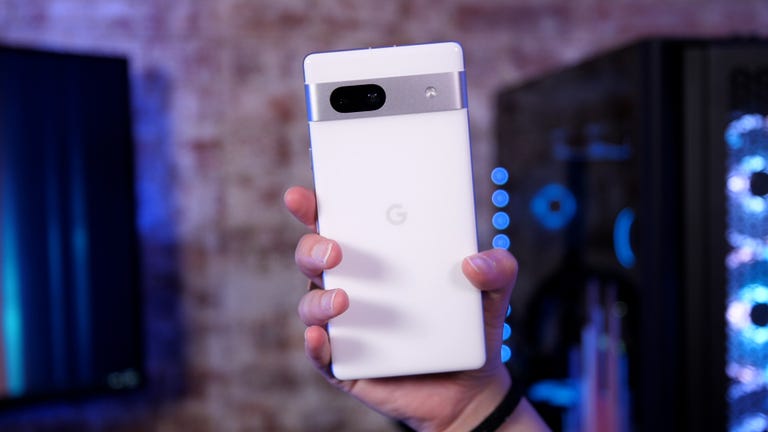
07:15
What is the best phone under $500?
Google’s $499 Pixel 7A compares so closely to the $599 Pixel 7, that it’s now tough to recommend the more expensive option. The Pixel 7A includes the same Tensor G2 processor that powers Google’s Pixel-exclusive features, gets wireless charging, a 90Hz refresh rate and a 64-megapixel main camera paired up with a 13-megapixel ultrawide camera. My colleague Lisa Eadicicco said that the Pixel 7A does miss out on the Pixel 7’s battery share feature, the camera’s Action Pan mode and slightly faster charging, but none of those features feel like a major omission.
And if you want to save even more money, last year’s Pixel 6A has received a permanent price drop to $349 and still has a lot to offer. It runs on the Tensor chip, includes many of the same Pixel features like Real Tone for photography and Hold for Me for phone calls and takes crisp and colorful photos for a phone of its price. This is especially true when it gets discounted to $299, which it often is, making it the best phone for under $300 as long as it’s on sale.
Best phones under $500
Google’s budget phone took a leap forward in 2023 with the Pixel 7A, which offers many of the same benefits as the Pixel 7 but at a cheaper price. Like the Pixel 7, the Pixel 7A runs on Google’s Tensor G2 processor, meaning it has many of the same photo editing and language translation features as its pricier sibling. The Pixel 7A’s 64-megapixel camera also takes excellent photos that rival the Pixel 7’s in quality.
While we still like the Pixel 7, the Pixel 7A’s lower price makes it a better deal for most people. Only opt for the Pixel 7 if you really want a slightly larger screen and are willing to pay the extra $100 for it. Otherwise, the main differences between the Pixel 7 and 7A come down to the former’s more durable build, slightly faster charging and its ability to wirelessly charge compatible accessories. The Pixel 7 also has a larger camera sensor that’s more sensitive to light, according to Google, but CNET’s Lisa Eadicicco didn’t notice much of a difference.
The Pixel 6A is still available, and at its permanently discounted price of $349, it still has a lot to offer. CNET’s Lisa Eadicicco said in her Pixel 6A review that the phone includes many of the Pixel 6’s best features, and that remains the case even as the Pixel 7A hits the market at $499.
The phone is slightly smaller than the Pixel 6, featuring a 6.1-inch OLED display and a refresh rate of 60Hz. And while it has a 12.2-megapixel main camera and a 12-megapixel ultrawide camera, photos taken look quite good using Google’s photo processing software. Pictures can benefit from its Real Tone skin tone feature, Face Unblur, Night Sight for darker photography and the Magic Eraser for removing unwanted elements from a photo.
The Samsung Galaxy A53 includes many of the best features seen in the Galaxy S22 line, with a few tradeoffs to hit that lower price. The phone includes a 6.5-inch AMOLED screen with a 2,400×1,080-pixel resolution, 5G support and a long-lasting 5,000-mAh battery. The phone also comes with a 64-megapixel main camera, 12-megapixel ultrawide camera, 5-megapixel macro camera and 5-megapixel depth camera.
But a particular high point for this phone is Samsung’s pledge to provide four years of software support, in addition to shipping with Android 12 with Samsung’s One UI 4.1. However, Samsung just announced a new version of this phone, called the Galaxy A54 5G, which we’re looking forward to testing soon.
The $429 iPhone SE is a mix of an older design with the latest smartphone features, including Apple’s A15 Bionic chip and 5G support. It’s also one of the few phones on the market that includes a smaller, 4.7-inch screen.
It’s that throwback design, which continues the general shape that Apple has used since 2014, that could be what you love or dislike most about this phone. If you want a larger iPhone in this price range, you can also consider the iPhone 11, and get a bigger screen and Face ID. But that phone does not include 5G connectivity.
The phone also only includes one 12-megapixel main camera, which does not support night mode. Most other phones in this roundup include multiple cameras and features like night mode, making the omission noticeable. However, photos make up for this by including the Deep Fusion photo-processing technique to enhance medium-to-low light photos, and Smart HDR4 processing for improving color and contrast. CNET Managing Editor Patrick Holland did find that video shot in 4K resolution at 60 frames per second is particularly good on the iPhone SE, but it will not include the Cinematic Mode seen on the iPhone 13.
The $500 Moto G Stylus 5G (2022) is one of the best stylus-equipped phones you can get right now, especially for the price. You get Android 12, 5G connectivity, a large 6.8-inch screen and a spacious 256GB of storage. Unfortunately, the phone is only promised one software update and three years of security updates, which is a much shorter timeline than the four years promised by Samsung for the Galaxy A53.
Yet if you want a stylus-equipped phone, the next step-up option is the substantially more expensive Galaxy S22 Ultra at $1,200.
With the launch of the iPhone 14 series, Apple discontinued the $500 iPhone 11, but it’s still widely available. It might be a few generations old, but this phone is still more than capable, handling gaming well and equipped with two superb rear cameras. It is missing 5G support, which is increasingly improving as wireless carriers invest in the network, but the phone will work fine on LTE and Wi-Fi. The iPhone 11 also does not support MagSafe accessories, which were introduced alongside the iPhone 12.
Just note that some places may be selling refurbished versions of the phone since Apple itself is no longer selling new iPhone 11 models. Best Buy does not carry any unlocked models, so you’ll have to sign up for a service plan through either AT&T, Verizon, T-Mobile or Sprint.
The Nothing Phone 1 is technically available in the US for $299, but only through a beta program that is selling an international model with limited US carrier compatibility. While the company does plan to officially launch a future phone for the North American market, this phone is still worth a look in countries where it’s available. It offers a striking design and decent specs for the money, even at its higher £399 UK price (which converts to roughly AU$700).
The Nothing Phone 1 is adorned with LED strips on the back, each of which is called a «glyph,» that light up for alerts and notifications. That design is accompanied by two 50-megapixel cameras: a wide angle and an ultrawide. Around the front is a 6.55-inch 120Hz display with a 2,400-by-1,080-pixel resolution and a 16-megapixel selfie camera. The phone runs on a Snapdragon 778G Plus chip, with models that start with 8GB of memory and 128GB of storage.
All that amounts to a phone that compares well within the price range, especially given its camera quality and looks.
How we test phones
Every phone on this list has been thoroughly tested by CNET’s expert reviews team. We actually use the phone, test the features, play games and take photos. We assess any marketing promises that a company makes about its phones. And if we find something we don’t like, be it battery life or build quality, we tell you all about it.
We examine every aspect of a phone during testing:
- Display
- Design and feel
- Processor performance
- Battery life
- Camera quality
- Features
We test all of a phone’s cameras (both front and back) in a variety of conditions: from outdoors under sunlight to dimmer indoor locales and night time scenes (for any available night modes). We also compare our findings against similarly priced models. We have a series of real world battery tests to see how long a phone lasts under everyday use.
We take into account additional phone features like 5G, fingerprint and face readers, styluses, fast charging, foldable displays and other useful extras. And we, of course, weigh all of our experiences and testing against the price so you know whether a phone represents good value or not.
Read more: How we test phones
Phones under $500 comparison
Samsung Galaxy A53 5G vs. Motorola Moto G Stylus 5G vs. Google Pixel 6A vs. Apple iPhone SE (2022) vs. Nothing Phone 1 vs. Apple iPhone 11
| Samsung Galaxy A53 5G | Motorola Moto G Stylus 5G (2022) | Google Pixel 6A | Apple iPhone SE (2022) | Nothing Phone 1 | iPhone 11 | |
|---|---|---|---|---|---|---|
| Display size, resolution | 6.5-inch AMOLED (2,400×1,080 pixels); 120 Hz | 6.8-inch LTPS LCD FHD+; 2,460 x1,080 pixels; 120 Hz | 6.1-inch OLED; (1080 x 2400); 60Hz | 4.7-inch LCD; (1,334×750 pixels); 60 Hz | 6.55-inch OLED display,2,400 x1080 pixels; | 6.1-inch LCD Liquid Retina; 1,792×828 pixels |
| Pixel density | 405ppi | TBD | 429 ppi | 326ppi | 402ppi | 326ppi |
| Dimensions (inches) | 6.28 x 2.94 x 0.32 in. | 6.65 x 2.98 x 0.37 in. | 6.0 x 2.8 x 0.35 in. | 5.45 x 2.65 x 0.29 in. | 5.94×2.98×0.33 in. | |
| Dimensions (millimeters) | 159.6 x 74.8 x 8.1 mm | 168.9 x 75.8 x 9.3 mm | 152.2 x 7.18 x 8.9 mm | 138.4 x 67.3 x 7.3 mm | 159.2 x 75.8 x 8.3 mm | 150.9×75.7×8.3 mm |
| Weight (ounces, grams) | 6.67 oz.; 189g | 7.58 oz.; 215 g | 6.3 oz.; 178g | 5.09 oz.; 144g | 193.5g | 6.84 oz.; 194g |
| Mobile software | Android 12 | Android 12 | Android 12 | iOS 15 | Android 13 | iOS 13 |
| Camera | 64-megapixel (wide), 12-megapixel (ultra-wide), 5-megapixel (macro), 5-megapixel (depth) | 50-megapixel (wide), 8-megapixel (ultrawide/macro), 2-megapixel (depth) | 12.2-megapixel (wide), 12-megapixel ultra wide) | 12-megapixel (wide) | 50-megapixel (main), 50-megapixel (ultra-wide) | 12-megapixel (wide), 12-megapixel (ultra-wide) |
| Front-facing camera | 32-megapixel | 16-megapixel | 8-megapixel | 7-megapixel | 16-megapixel | 12-megapixel with Face ID |
| Video capture | 4K | 1,080p | 4K | 4K | 4K at 60fps | 4K |
| Processor | Exynos 1280 | Snapdragon 695 5G | Google Tensor | Apple A15 Bionic | Snapdragon 778G+ | Apple A13 Bionic |
| RAM/Storage | 6GB/128GB | 8GB/256GB | 6GB RAM/128GB storage | 64GB, 128GB, 256GB | 8GB + 128GB, 8GB + 256 GB, 12GB RAM + 256GB | 64GB, 128GB, 256GB |
| Expandable storage | Up to 1TB | Up to 1TB | None | NA | None | None |
| Battery/Charger | 5,000 mAh (charger not included, does not support wireless charging) | 5,000 mAh (10W wired charger included) | 4,410 mAh capacity; 18-watt fast charging (adapter sold separately) | Battery NA (20W wired charging — charger not included), 7.5W wireless charging) | 4,500 mAh (33W wired charging, 15W wireless charging, 5W reverse charging) | Not disclosed, but Apple claims it will last 1 hour longer than iPhone XR |
| Fingerprint sensor | In-display | Side | Under display | Home button | In-display | None (Face ID) |
| Connector | USB-C | USB-C | USB C | Lightning | USB-C | Lightning |
| Headphone jack | None | Yes | None | None | None | No |
| Special features | 5G-enabled; IP67 rating; supports 25W wired fast charging, Samsung Pay | 5G-enabled; OIS for main camera; NFC for Google Pay; | 5G-enabled, 18W fast charging, Wi-Fi 6E, security updates for 5 years, Android OS updates for 3 years, dual SIM, IP67 water resistance | 5G-enabled; supports 25W wired fast charging; Water resistant (IP67); dual-SIM capabilities (nano-SIM and e-SIM); wireless charging | 5G, IP53, Three years of Android updates, Dual Sim, 120Hz adaptive refresh rate | Water resistant (IP68); dual-SIM capabilities (nano-SIM and e-SIM); wireless charging |
| Price off-contract (USD) | $450 | $500 | $449 | $399 (64GB), $449 (128GB), $549 (256GB) | N/A | $499 |
| Price (GBP) | £399 | NA but converts to £405 | £399 | £419 (64GB), £469 (128GB), £569 (256GB) | £399 | £489 |
| Price (AUD) | AU$699 | NA but converts to AU$715 | A$749 | AU$749 (64GB), AU$829 (128GB), AU$999 (256GB) | N/A | AU$849 |
Phones under $500 FAQs
Are cheaper phones worth it?
For many people, a phone that costs less than $500 will likely have everything you need for communication, photography and entertainment. In some cases, the phones even provide some of the latest features seen on higher-end phones like smooth 120Hz refresh rates and multiple cameras.
However, you should be aware of — and OK with — the limitations a phone may have compared to its more expensive counterparts. For instance, if you want an iPhone with a bigger screen than the iPhone SE and iPhone 11’s screens, your next best option is the $899 iPhone 14 Plus. That’s far outside the $500 price range, but you also get additional benefits like an improved camera.
On the other hand, if you want a phone with a bigger screen and if running Android is fine, you’ll have plenty of options that are under $500.
Can you get a good camera on a cheaper phone?
Yes, you can find several cheaper phones that take great photos, whether it’s through the camera available on the device, photo processing software on the phone or — is most often the case — a combination of both.
Apple’s iPhone SE includes the A15 Bionic chip, which supports Smart HDR4 processing and Apple’s Deep Fusion processing. Smart HDR4 helps with improving color and contrast, while the Deep Fusion processing helps with medium- to low-light environments. CNET Managing Editor Patrick Holland put together a sampling of photos and videos taken on the phone during his review, which can be watched on the CNET Highlights YouTube channel. However, the iPhone SE also has only one 12-megapixel camera, and that camera does not support night photography.
Over on the Android side, the Google Pixel 6A includes the company’s Tensor chip, which brings photography features like Real Tone for capturing more accurate skin tones, Face Unblur for fixing a person’s face and Magic Eraser for removing unwanted objects. But it has a 12-megapixel main camera paired up with a 12-megapixel ultrawide camera, which takes good photos but is a clear step down from the 50-megapixel main camera seen on the Pixel 6 and Pixel 7.
Samsung’s Galaxy A53 is an interesting case: Iit has a main 64-megapixel camera alongside a 12-megapixel ultrawide, 5-megapixel macro camera and 5-megapixel depth camera. While that’s more megapixels than the 50-megapixel main camera on the Galaxy S22, the image detail is a step down with the S22 able to produce photos with better contrast and sharpness.
What makes these phones cheaper?
Each company takes a different approach toward cheaper phones.
The iPhone SE, for example, has a recent Apple processor packed inside an otherwise dated phone design. Google’s Pixel 6A likewise includes the new Tensor processor, but uses an older 12.2-megapixel main camera instead of the 50-megapixel main camera found on the $599 Pixel 6.
Samsung’s Galaxy A53 takes the opposite approach. It includes a processor that’s slower than the Galaxy S22’s but includes other modern features like a screen with a high refresh rate.
More phone advice
- Best Android Phone for 2023
- Best MagSafe Accessories for the iPhone
- Best Prepaid Phones for 2023
- Samsung’s Galaxy Phones: Which Should You Buy?
- SIM Card Swap Fraud: What It Is and How to Prevent It
- Best Cheap Phones Under $200: Top Picks and New Budget Phones
- Best iPhone Fast Charger for 2023
- Best iPhone for 2023: Which of Apple’s 8 Phones is Right for You?
Technologies
The New Year Will Kick Off With a Supermoon. Here’s When to See It
January’s Wolf Moon will be the final of four consecutive supermoons.
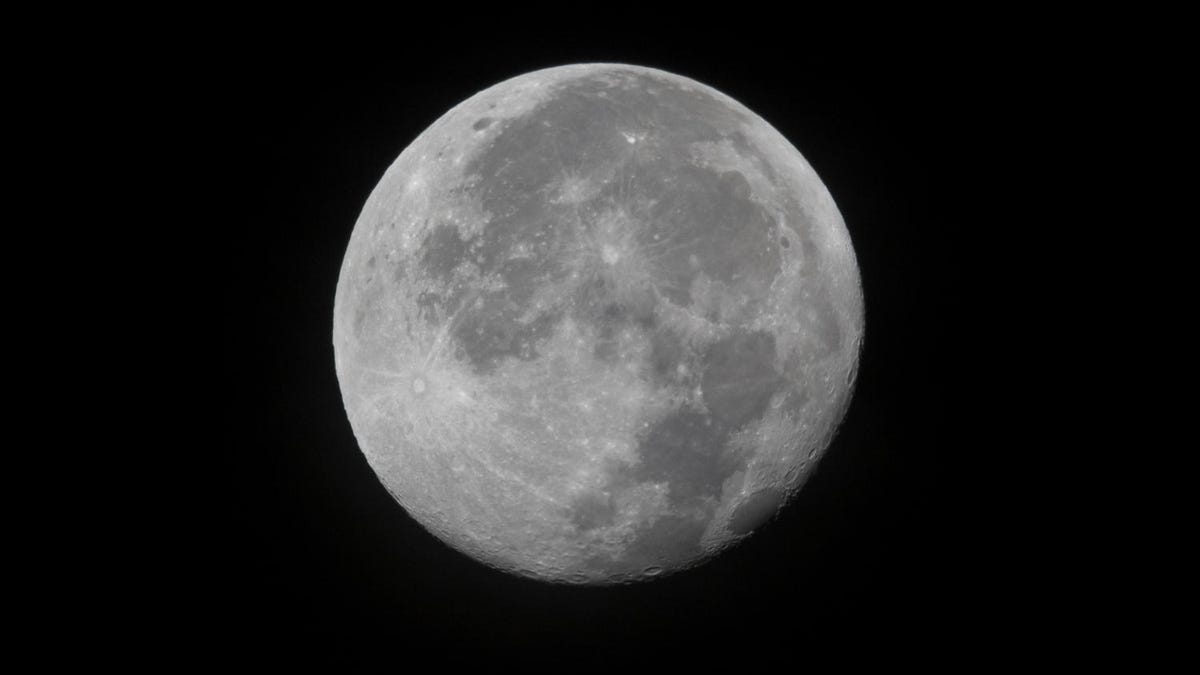
Supermoons tend to come in packs, and Earth has just experienced three of them in a row, dating back to October. The final supermoon of this sequence is happening on Jan. 3, and it also happens to be the first supermoon of 2026. Skygazers will want to catch this one, since the next one won’t occur until next November.
Don’t miss any of our unbiased tech content and lab-based reviews. Add CNET as a preferred Google source.
The moon tends to spend three to four months at a time in perigee, a fancy term that means it’s as close to Earth as its elliptical orbit will allow. During this time, humans refer to full moons as a supermoon. Since the moon is physically closer to Earth than it normally is, a full moon appears brighter and larger in the sky.
The difference can be a moon that is up to 14% bigger and 30% brighter than a micromoon, which occurs when the moon is at apogee, or the furthest point away from Earth. That brightness is the real differentiator, as a supermoon is bright enough to light up your backyard, especially if there is snow on the ground.
The odds of this are pretty good, as it is expected to snow in a few parts of the US between Christmas Day and New Year’s Eve.
To see the moon at its brightest, you’ll want to stay up late on Jan. 2 or wake up very early on Jan. 3. According to The Farmer’s Almanac, January’s supermoon will rise from the eastern horizon and streak across the sky to settle in the west around sunrise. The moon will reach peak illumination at 5:03 a.m. ET. It should still be dark outside for the entire US during this time, so everyone will have a chance to see it.
If you can’t due to weather or other engagements, the Wolf Moon will be over 90% full from Dec. 31 through Jan. 5, which gives you almost a week at near-maximum illumination.
Since the moon is the largest and brightest object in the night sky, you also won’t need any special magnification devices to see it. However, a good pair of binoculars or a telescope makes the moon’s surface details easier to see, and helps photographers take some impressive moon shots.
The full moon in January is commonly called the Wolf Moon, and it’s due to increased activity from wolves during this time. Not only does January mark the beginning of the wolf’s winter mating season, but wolves are also typically more active during the dusk and dawn hours, and dusk happens pretty early in the day, right after the winter solstice. In the old days, this meant that people were much more likely to see a wolf or hear wolves howling during January.
Technologies
The FCC’s Foreign Drone Ban Is Bad News for Anyone Who Wants a DJI Device
The US government is making good on an anticipated ban on the import of foreign-made drones, including those from the world’s top seller.
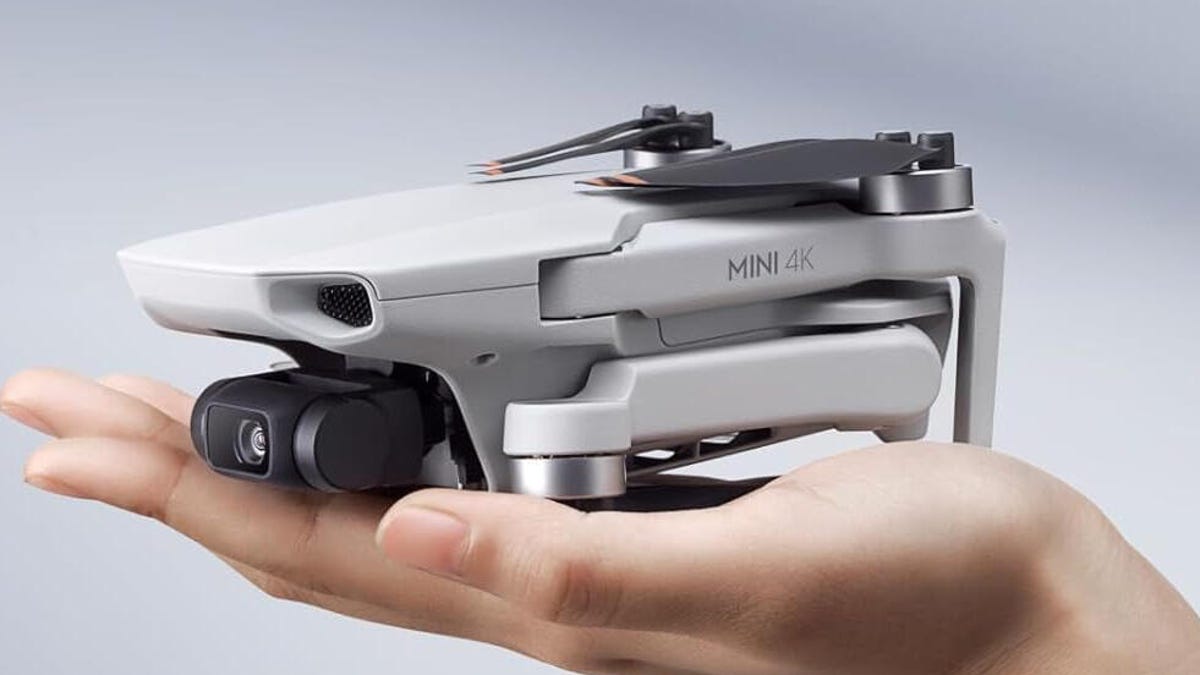
If a DJI drone was on your list to buy going into 2026, you might want to act quickly. The Federal Communications Commission has made good on an anticipated ban on the import of foreign-made drones, including those made by DJI, the world’s top seller of the flying devices.
The FCC on Monday added uncrewed aircraft systems and their components that are produced in a foreign country to its Covered List, a record of gear and services deemed to «pose an unacceptable risk to the national security of the US.»
According to the FCC’s public notice, that includes but isn’t limited to data transmission devices, flight controllers, sensors and cameras, batteries, motors and other drone components.
Don’t miss any of our unbiased tech content and lab-based reviews. Add CNET as a preferred Google source.
In late October, the agency voted 3-0 to «close loopholes» that allow tech deemed a «national security risk» to be sold in the US. In plain English, the US government cleared the path to give DJI the same treatment it gave Chinese phone-maker Huawei, effectively banning its products from the American market.
In a statement, DJI said it was disappointed by the decision. «While DJI was not singled out, no information has been released regarding what information was used by the Executive Branch in reaching its determination,» a spokesperson said. «Concerns about DJI’s data security have not been grounded in evidence and instead reflect protectionism, contrary to the principles of an open market.»
DJI said it remains committed to the US market and that it’s possible future products could be cleared for launch here at the discretion of the Department of Defense and Department of Homeland Security.
Drones already in the hands of US consumers aren’t impacted: «This action does not affect any previously-purchased drone. Consumers can continue to use any drone they have already lawfully purchased or acquired,» the FCC said in a fact sheet about the change.
In its announcement, the government cited upcoming high-profile events including 2026’s FIFA World Cup and the 2028 Los Angeles Summer Olympics as mass-gathering events that could be put at risk by drones.
«The federal government is taking additional actions to safeguard Americans and restore American airspace sovereignty,» the FCC said.
The FCC has also been considering a separate ban on TP-Link routers, but that was not included in this December update to its Covered List.
DJI asked for a security audit before any ban
In October, DJI told CNET that the FCC appeared to be making its decision «without any evidence of wrongdoing or the right to appeal.»
Adam Welsh, head of global policy at DJI, said the company has repeatedly said it would be open to audit, but that «more than 10 months have now passed with no sign that the process has begun.»
«The US government has every right to strengthen national security measures, but this must go hand in hand with due process, fairness, and transparency,» Welsh said at the time.
Will DJI drone owners need to give them up?
Because the ban applies to new sales, not drones that have already been sold, a DJI drone you already own is still be legal to use — at least under current rules.
Government agencies, however, were already prohibited from purchasing or using drones from Chinese companies, including DJI.
DJI’s drones consistently rank high in their product category. In January, they dominated CNET’s list of best drones for 2025. But some of the company’s newest products, such as the DJI Mavic 4 Pro, haven’t been available for sale in the United States.
Even before the policy change, some DJI products were hard to find. The website UAV Coach has posted a guide to the bans and reports that, due to inventory issues, most DJI drone models were sold out at retailers.
Technologies
AT&T Just Revealed Which Holiday Has the Most Calls. And No, It’s Not Christmas.
You might be able to guess the biggest texting day of the year, but the Holiday with the most phone calls gave me chills.

The holidays are a time for connecting with friends and family, either by gathering in person or checking in remotely. So, naturally, you might think phone calls would be at their highest during the festive stretch at the end of the year. But according to new figures shared with CNET by AT&T, another holiday got the highest number of calls in 2025. Which one?
The answer might give you chills: AT&T’s subscribers conjured up around 651 million phone calls on… Halloween. The company shared no other data besides the massive number, leading me to wonder why the spooky season inspired so many calls. Lost trick-or-treaters calling their parents for rides? People in costumes at parties accidentally butt-dialing their friends? Poltergeists pilfering people’s phones? Only the spirits truly know.
Despite that one-day call volume, texting is vastly more popular than phone calls over the course of the year. Through Dec. 9, 2025, the network registered almost three times more texts than calls: 525 billion texts sent vs. 181 billion calls made during the year.
And the top texting day? Dec. 1, 2025, with around 2.3 billion (specifically 2,264,041,461) messages sent.
These figures represent traffic on AT&T’s mobile network, which does not include its home or business broadband services. And, of course, it’s a snapshot of just one provider. AT&T has around 119 million subscribers, according to Wikipedia.
When you’re looking at phone plans, even unlimited phone plans, using tens of gigabytes of data during a month sounds like a lot. But at the network level, the scale is staggering, even in limited areas.
For example, AT&T also broke out its three largest data events in 2025: Mardi Gras (March 4) logged 57.5 terabytes; South-by-Southwest (SXSW) (March 7 to 15) went through 34.1 terabytes; and the Formula 1 Miami Grand Prix (May 4) burned 24 terabytes. (One terabyte is roughly equal to 1,000 gigabytes.)
Overall, across all of AT&T’s networks — mobile, broadband and enterprise — the company reported average data traffic of 1 exabyte per day. That’s 1 million terabytes.
With massive communications infrastructure built over the last few decades by AT&T, Verizon, T-Mobile and others, we’re likely long past the days of phone networks getting clogged by the surge of calls on Christmas Day.
So make a point of calling your family this holiday, or at least send a text. The network should be able to handle it.

